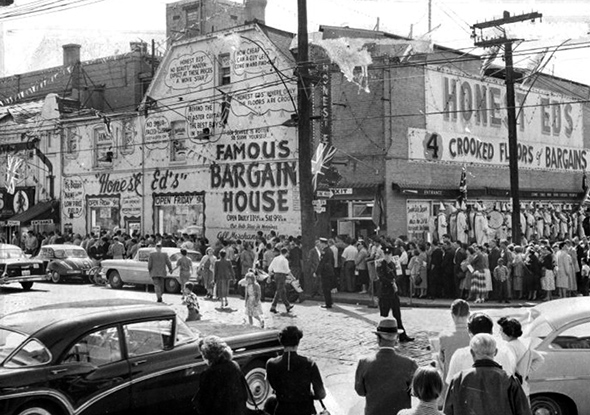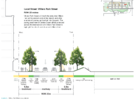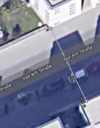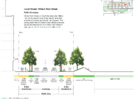Monarch Butterfly
Superstar
No overhead wires, no trenching, if the city goes for solar-powered street lighting.
How Solar Powered Street Lighting Saves Your City Money
From link.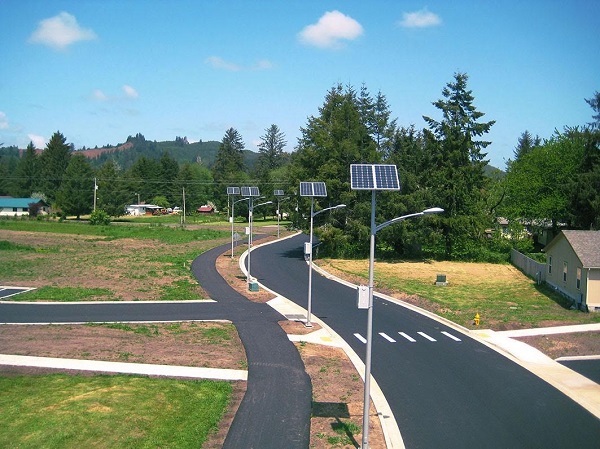
We're sure founding and developing a city is never an easy thing. Our hats go off to mayors, city planners, budget wizards, and other key figures in planning to find the best ways to support a city's operations. We'll leave the expert work up to you. However, we're doing meticulous research behind our doors in how to find the best ways to cut corners in energy spending for your city, and the good news is that we've slashed city budgets by several thousands of dollars in the past. We've got a secret in energy that can let your city prosper, and the answer is in using solar-powered street lighting.
No Trenching or Wiring Fees
The second method that solar-powered street lighting uses to save you money is through being self-sufficient. As before, each solar light doesn't need connectivity to the main power grid, so that means project managers and city planners can skip paying the trenching, wiring, and labor fees altogether.
Trenching is extremely expensive. The price can vary by linear foot depending on what's nearby the project site, what condition the soil is in, and other factors. You'll need to rent the equipment and hire professionals for the labor. Then there are backfill fees as well.
Or, you could decide to switch to solar and skip all that hassle and expense.
The average price percentage saved for the total price of a lighting project, from the initial quote to the first night of operation, is typically 20%, but some projects can go as high as even 45%, depending on the needs of the project.

Advantages of solar street lights
From link.
The use of solar power for illuminating streets and other public places is getting popular day by day. It has become a dependable source of lighting streets around the globe. There are multiple benefits of using solar street lighting fixtures, like conservation of energy, use of a conventional source of energy, and less dependence on the national grid. Tropical countries that receive ample sunlight most time of the year can be highly benefited from this source of light.
These days, outdoor solar lighting solutions are powered by an in-built battery, PV panels, smart sensors, LED lights, everything integrated into one compact unit. This form of lighting option has become an environment-friendly and cost-effective way of lighting streets and public places.
As much as solar energy is a cost-effective option for lighting, using LEDs with solar light becomes a super saver combo. LED lights are long-lasting, maintenance-free, and known for energy conservation. These specifications of solar LED luminaires are perfect for lighting-up roads, streets, parks, etc.
Advantages of solar-powered outdoor lights
As infrastructure facilities around the world are getting stronger, the usage of modern solar street luminaries is increasing rapidly. It is because these lights come with inbuilt lithium-ion batteries, embedded solar panel, night and motion sensors, battery management system and automatic controls.
Some other notable benefits of solar street luminaires are mentioned in the pointers noted below:
● Solar street lights are water-resistance and weatherproof and have a low glare and low insect attrition rate.
● The solar panels in these lights convert solar energy into electrical energy that gets stored in the inbuilt battery and is utilized for dusk-to-dawn lighting operations.
● The main feature of contemporary solar street luminaires is the battery management system which aids the presence of motion and night sensors.
● In the first five hours of the night, the performance of the system is up to medium-level brightness. The intensity of light decreases progressively until dawn or till the time the PIR sensor is activated by the movement of humans.
● With a smart lighting option, it automatically turns on to full brightness when it senses human movement within a specific radius of the luminaire.
● In comparison to conventional street lights, solar outdoor luminaires require almost no maintenance.
These unmatchable and smart features of solar LED street lights allow people to rely on this type of luminaires.
The angle on the solar panels should aid in sliding snow off of them, along with the dark colours which would absorb the sun's heat to melt the snow. Hopefully, the batteries will last more than 24 hours, a week would be better.
Does mean the buildings should be configured so that sunlight would fall for a few hours each day, to charge the batteries. Solar panels on top of the buildngs?
Last edited:
